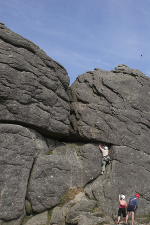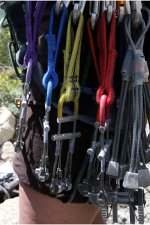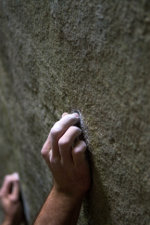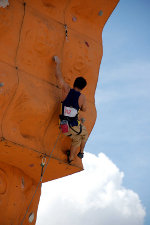Some areas that are popular for climbing, for example in the US and Australia, are also sacred places for indigenous peoples. Many such indigenous people would prefer that climbers not climb these sacred places and have made this information well-known to climbers. A well known example is the rock formation that Americans have named Devils Tower National Monument. Native American cultural concerns also led to complete climbing closures at Cave Rock at Lake Tahoe, Monument Valley, Shiprock and Canyon de Chelly.
Climbing activities can sometimes encroach on rock art sites created by various Native American cultures and early European explorers and settlers. The potential threat to these resources has led to climbing restrictions and closures in places like Hueco Tanks, Texas, and portions of City of Rocks National Reserve, Idaho.
In Australia, the monolith Uluru (Ayers Rock) is sacred to local indigenous communities and climbing is banned on anything but the established ascent route (and even then climbing is discouraged).
Indigenous peoples are not the only cultures that object to climbing on certain rock formations. Professional climber Dean Potter kicked off a major controversy when he ignored long-accepted convention to scale Delicate Arch in 2006, resulting in strict new climbing regulation in Arches National Park.









